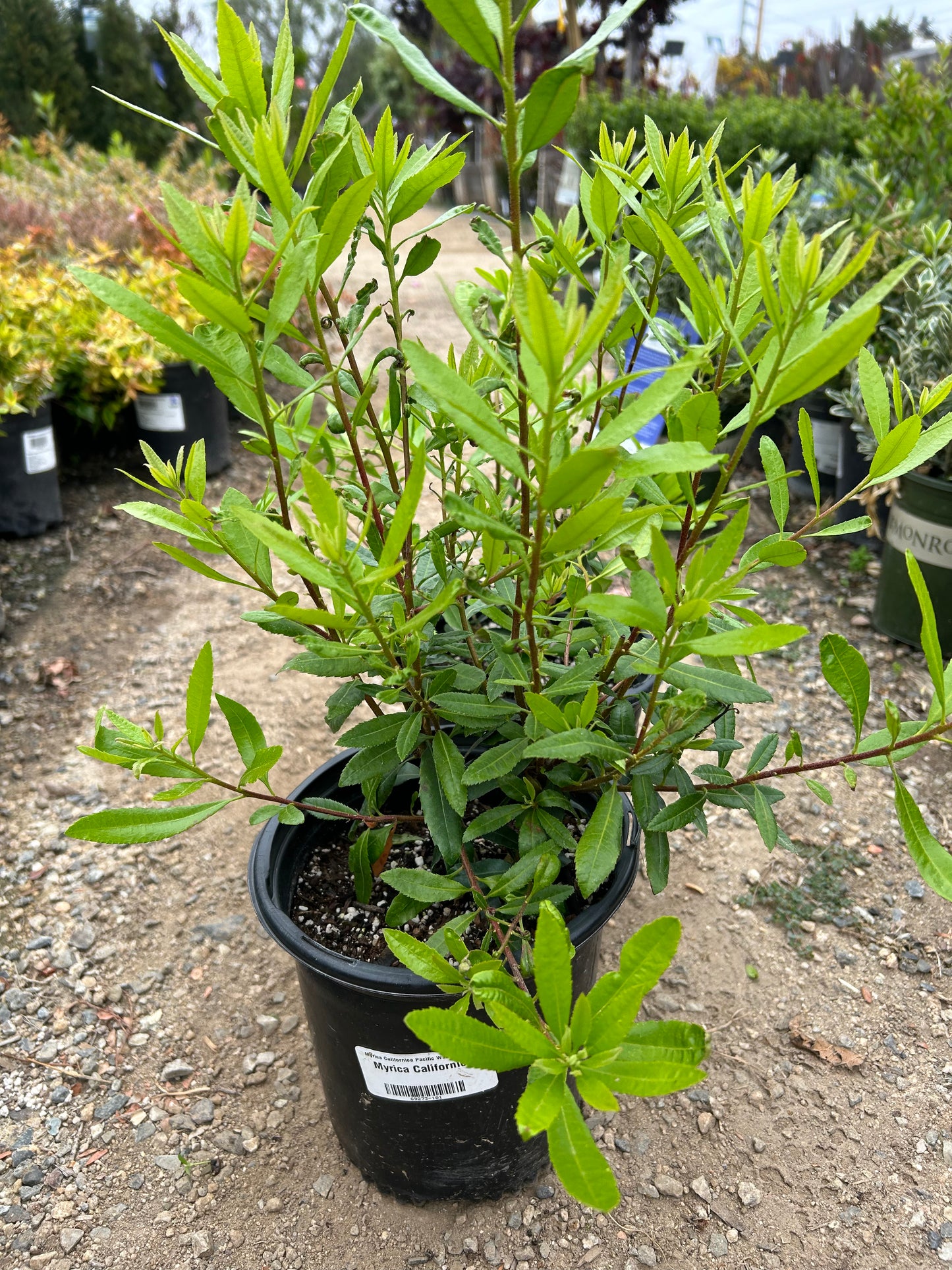Healthy Harvesters
Pacific Wax Myrtle
Pacific Wax Myrtle
Couldn't load pickup availability
Pacific Wax Myrtle Myrica californica
Myrica californica (Pacific Wax Myrtle) - This California native is a vigorous multi-branched evergreen shrub reaching up to about 30 feet tall and 20 feet wide - easily kept smaller. It has smooth gray bark and upright stems that are densely clothed with lustrous 4-inch long, toothed-edge leaves which emerge a bright apple green is spring and darken as they mature.
Unique Qualities
The Pacific Wax Myrtle (Myrica californica) stands out in landscaping with its unique qualities, including remarkable salt tolerance, making it ideal for coastal environments, and aromatic foliage that releases a pleasant scent when disturbed, adding sensory delight to outdoor spaces. Its berries serve as a food source for wildlife, attracting various bird species and contributing to local biodiversity, while its drought tolerance once established makes it suitable for water-wise landscaping and regions prone to dry conditions.
With its dense, evergreen foliage and adaptability to pruning, the Pacific Wax Myrtle offers versatility in landscape applications, serving as a hedge, screen, windbreak, or specimen plant, making it a valuable addition to gardens seeking both aesthetic appeal and ecological benefits.
Growing Pacific Wax Myrtle
- Thrives in well-draining soil, tolerating various soil types including sandy, loamy, or clay soil.
- Water regularly during the first growing season to establish roots, then reduce to occasional watering once established.
- Prefers full sun to partial shade, but can tolerate shade.
- Thrives in a wide range of temperatures, from 0°F to 100°F (-18°C to 38°C).
- Prune in late winter or early spring to shape the plant and remove any dead or damaged branches.
-
Best suited for USDA Hardiness Zones 7 to 11.
Shipping Info
The plant is currently growing in a one gallon container, but will be shipped with the roots wrapped in plastic and ready to plant upon arrival. The plant will be between 10” to 12” in height. Planting guidelines will also be included.






